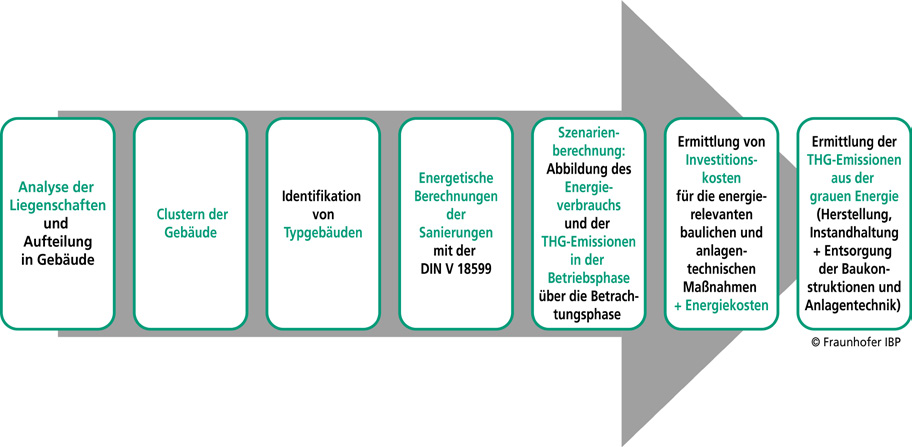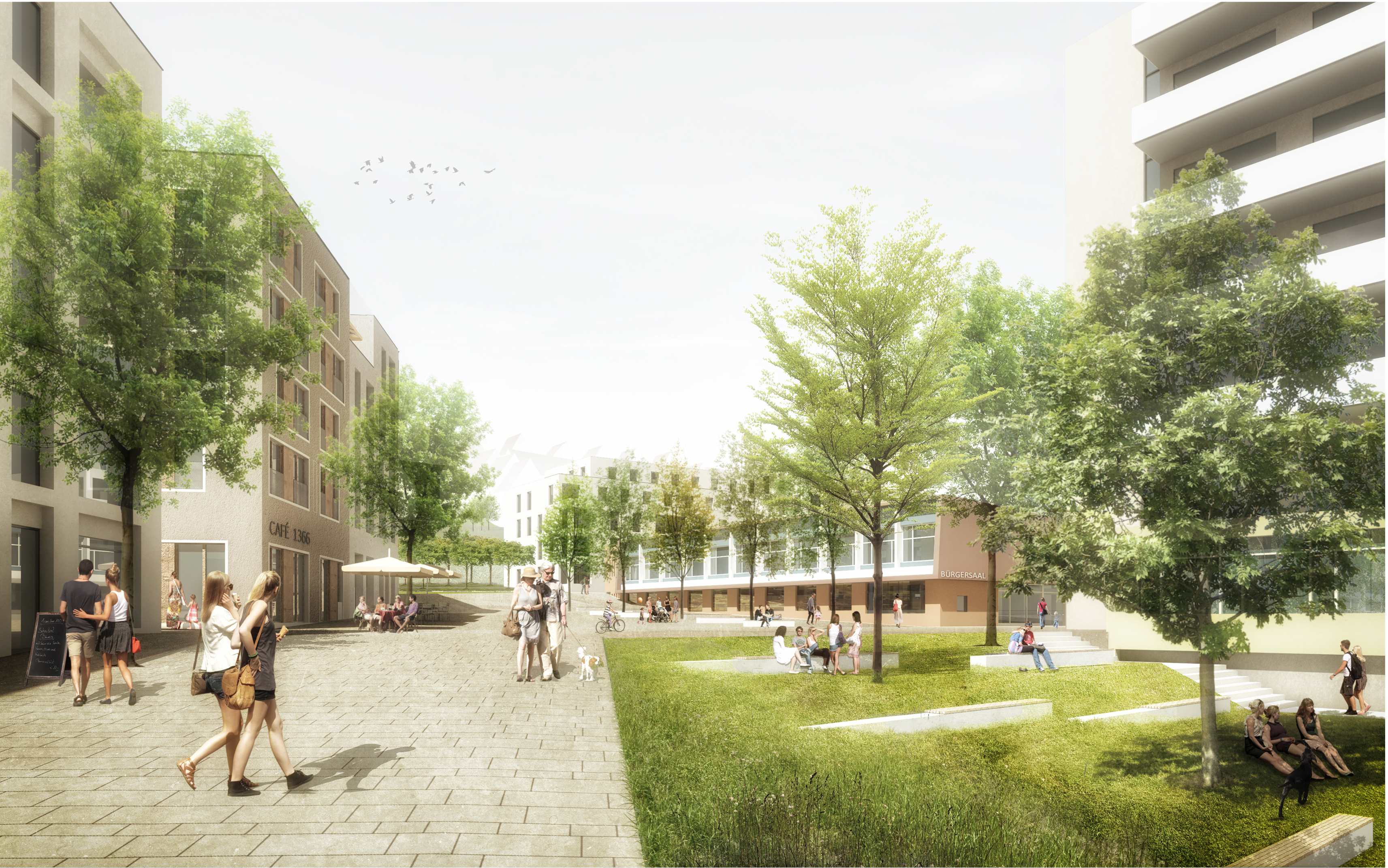Germany aims to become carbon neutral by 2045 and this is accounted for in the amended Federal Climate Protection Act of 2021. This also affects the building sector: permissible greenhouse gas emission levels will decrease markedly every year. Already today, Fraunhofer IBP researchers are developing energy concepts for pilot districts and properties that address the goal of greenhouse gas neutrality.


Pilot districts
The “STADTQUARTIER 2050” project, which is funded by the German Federal Ministries of Education and Research (BMBF) and for Economic Affairs and Climate Action (BMWK), shows what this can look like. In the project, two urban residential districts are being converted in a socially responsible, carbon-neutral manner. To this end, the Stuttgart district will be supplied with heat from a mix of geothermal and wastewater heat recovery and photovoltaic thermal collectors (PVT). Power will be supplied by photovoltaic collectors mounted on the buildings and green electricity. A guideline, which was also developed in the project, shows how the carbon-neutral supply of energy to residential districts can be realized with different concepts. The guideline is currently being further developed into the “Klimaneutral Easy” tool. A method for assessing the ecobalance of a district has also been developed.
Evaluating concepts for district infrastructures
On behalf of the federal state of Baden-Württemberg, researchers from Fraunhofer IBP assessed the technical infrastructure of two concepts for expanding the Heidelberg University complex which were submitted in an urban planning competition. They evaluated the two designs in terms of energy and function and calculated the greenhouse gas emissions generated to run the buildings and the gray energy of the proposed concepts.
Retrofit scenarios: working towards carbon-neutral real estate portfolios
What impact do energy retrofits and energy supply conversions have on greenhouse gas emissions generated through operating municipal buildings between now and different target years? Our teams of scientists investigated this in studies for the cities of Munich and Oldenburg. They compared the positive changes with the resulting investment, planning and energy costs, as well as the greenhouse gas emissions from constructing, maintaining and disposing of the building structures and plant technology used. Such studies based on calculations for various types of building can also be applied to other real estate portfolios.
Carbon neutrality at Fraunhofer
The Fraunhofer-Gesellschaft is also pursuing the goal of becoming carbon neutral by 2030. Researchers at Fraunhofer IBP and other Fraunhofer Institutes are therefore working together to develop a roadmap for reducing greenhouse gas emissions. To this end, they have drawn up a comprehensive climate balance sheet, identified potential savings, estimated costs, and drafted a catalog of measures for seven fields of action. Led by Fraunhofer IBP, the first concrete measures in the field of action “buildings” are already being implemented, such as the development of a guideline for retrofit roadmaps and the conception of an energy standard for new buildings and renovation measures.